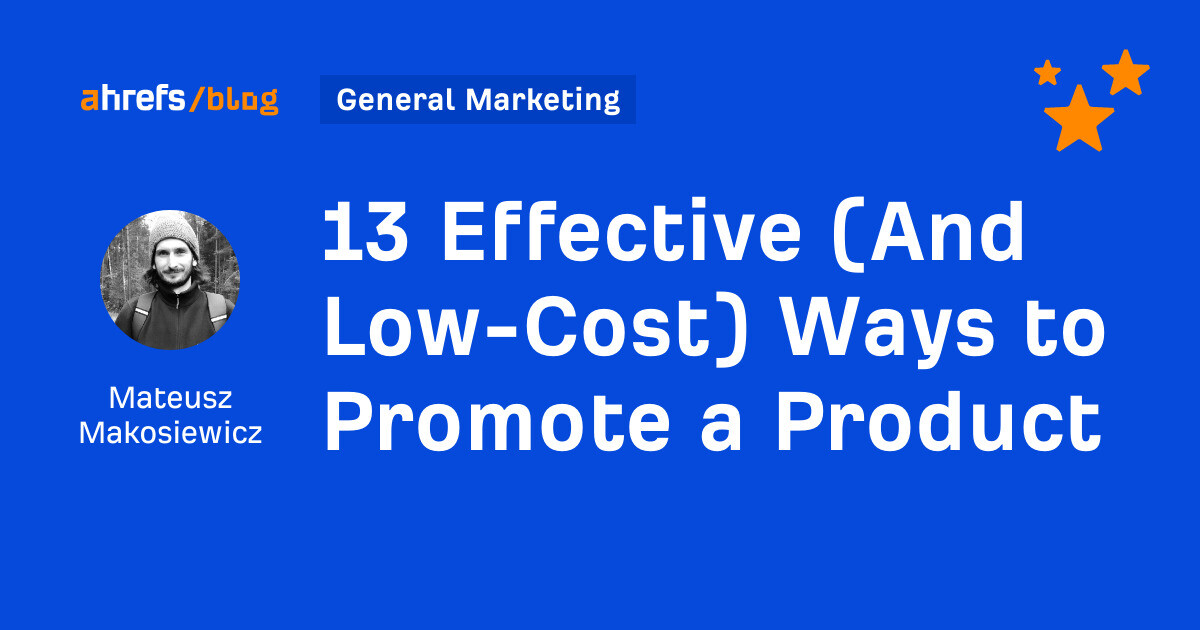Promoting a product while low on cash—every company goes through this phase.
But the good news is you don’t need to spend a ton of money to get your product in front of the right audience.
We’ll start with things you can do for a product launch and move on to promotion tactics you can use at any stage.
Social media can be used for pre-launch marketing in many ways.
For example, if you’re launching something you know people are going to be super excited about, you can capitalize on that by “leaking” product information before the launch.
This will help turn that potential demand for a solution into anticipation for your product.
Even simple means can do the job here, such as a countdown to launch day or a special pre-launch giveaway.
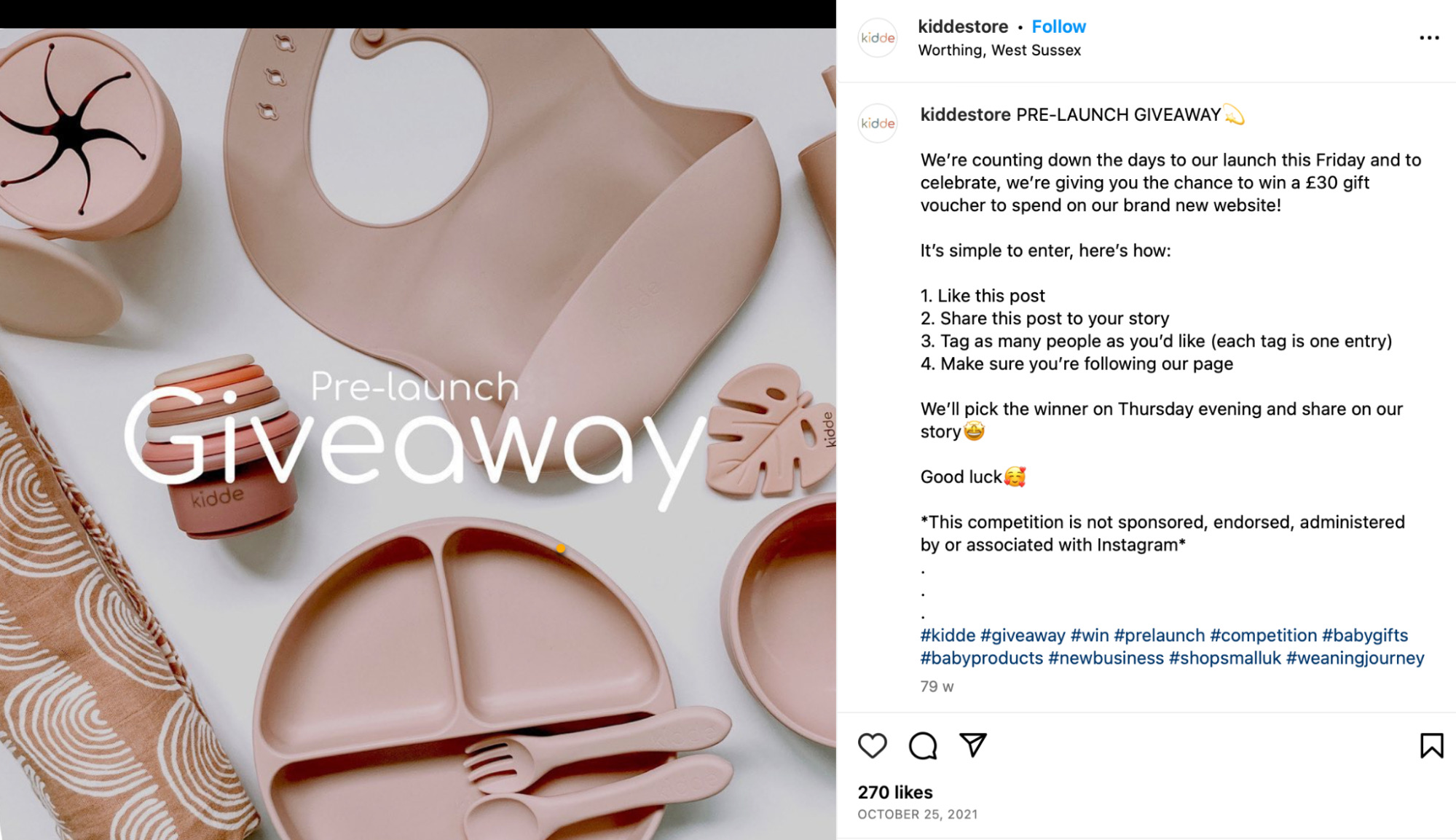
One important thing to note is this tactic has little chance of succeeding if you have zero networking.
However, this is something you should definitely try out:
- If you have at least some following on social media.
- If you’re an active member of relevant communities.
Oldie but goodie. A PR note, aka press release, is an official statement delivered to members of the media. It’s used to share something newsworthy with the aim of securing media coverage.
Brands have been sending out PR notes before you and I were born—and it still works today.
Why? Part of the job of news websites is to inform their readers about new and exciting products they can use to help them at work or make their life simpler—and that product could be the one you’ve been developing.

The key to this tactic is to send your press release ahead of your launch to give journalists time to prepare.
Moreover, you may want to shortlist a few important media outlets and offer them to be the first to get their hands on the product.
To learn the art of creating and distributing PR notes (and get a free template), check out our guide: How to Write a Press Release.
Product Hunt, AlternativeTo, Hacker News. These are some of the listing platforms you can use to tell the world about your product.
They’re great for product promotion for two reasons: the community and the distribution mechanism.
When adding your product to those platforms, you’re not launching to the void. People gather around those platforms to see new products, try them, and share their experiences. And when you launch something users truly appreciate, you get rewarded with more exposure on the platform. And so, the cycle continues: more viewers, more comments/upvotes, more exposure.

Some other benefits of listing platforms:
- Feedback – If you want to learn how to improve your product to get more customers, you’re likely going to get some. Of course, everybody will be able to see the comments, so keep in mind this is a double-edged sword.
- Credibility – The platforms act as social proof that can build trust in your product.
- Virality – In the best-case scenario, your product becomes really popular, and the community starts to recommend it outside the platform.
Check out Product Hunt’s case studies. They show how the above benefits helped grow popular products like Notion and Loom.
While most listing platforms will have that same community aspect, they will have their differences and unique features, so make sure to learn a bit about them.
For example, Product Hunt gives you the ability to advertise on its platform, while AlternativeTo allows you to list your product as an alternative to a staple in the industry and piggyback on its popularity.

Influencer marketing is about working with popular internet personalities to promote your brand’s message, products, or services.
Just to be clear, not all influential people in a given niche will be open for sponsored content. But for those who are, and there are a lot of them, sponsored content is one of the monetization methods without which their channel probably wouldn’t exist.
There are influencers “suitable” for just about any kind of budget and most industries. Since we’re talking about low-cost tactics here, I’d recommend reaching out to nano and micro influencers.

Their reach may be relatively low, but they may sit in the right niche for your product and have a strong engagement with their audience.
As a matter of fact, even big brands work with micro influencers. For instance, Peugeot, the European car manufacturer, invited micro influencers to the Brussels Motor Show to share their experience and promote the brand (case study).

While we’re talking about costs, it’s worth mentioning that some influencers may be open to non-cash compensation, such as:
- Sponsoring a giveaway for their audience.
- Receiving freebies/swag.
- Getting invites to exclusive events.
There are all sorts of ways an influencer can promote your product. These include hosting giveaways, doing product reviews, sharing your best content, or just doing product placements. And they don’t necessarily need to be one-off campaigns. They can be the start of a long business relationship.
How do you find the right kind of influencer? Luckily, there are tools for that: Social Blade, Heepsy, and SparkToro, among others.
Next, you need to vet them in terms of things like recognition and resonance, reach out, and develop an influencer agreement. We share some tips on how to go through all that in our guide to influencer marketing for beginners.
By an optimized landing page, I mean a page optimized for search engines like Google.
An optimized page is set up to rank for relevant keywords and generate free, passive, and consistent traffic. It’s just like the landing page for our free website traffic checker, which was optimized for, you guessed it, the “website traffic checker” keyword. It ranks in the top 10 for this keyword and over 400 other relevant keywords.

Taking all keywords together, Google sends us about 31,000 visits each month without any ad spend from our side.

The key to optimizing a landing page for SEO is finding a relevant keyword with the right kind of search intent. This means that the current SERPs for this keyword should imply that the searcher might be looking for a page offering a product and not, say, curated lists of products or guides.
Let me unpack this with an example.
Below you will find a comparison of two keywords. The one on the left shows a strong presence of product landing pages—a good sign you may rank for this with a product landing page. The one on the right shows no product landing pages. Thus, trying to target that with a landing page is not impossible, but certainly hard.

Here’s a breakdown of how optimizing a product landing page works:
- Use an SEO tool like Ahrefs’ Keywords Explorer to find relevant keywords that imply that the searcher may be looking for a product
- Design the page for search intent; include information that should be helpful for the reader
- Optimize on-page SEO technicals (such as title tag, URL, and images)
- Add relevant internal links
- Build backlinks
Head on to our guide on optimizing landing pages and learn all the details.
Got some social media following or an email list? Great! Use it for promoting your new product.
These contacts already know your brand, and that’s the first step to them becoming paying customers.
On top of that, if you already have some satisfied customers, chances are they’ll be interested in the next product just because they liked the previous one. Statistically, the probability of selling to an existing customer is 60%–70%, while the probability of selling to a new prospect is 5%–20% (source).
To illustrate, Apple values returning customers so much that it offers to buy back their old iPhones.
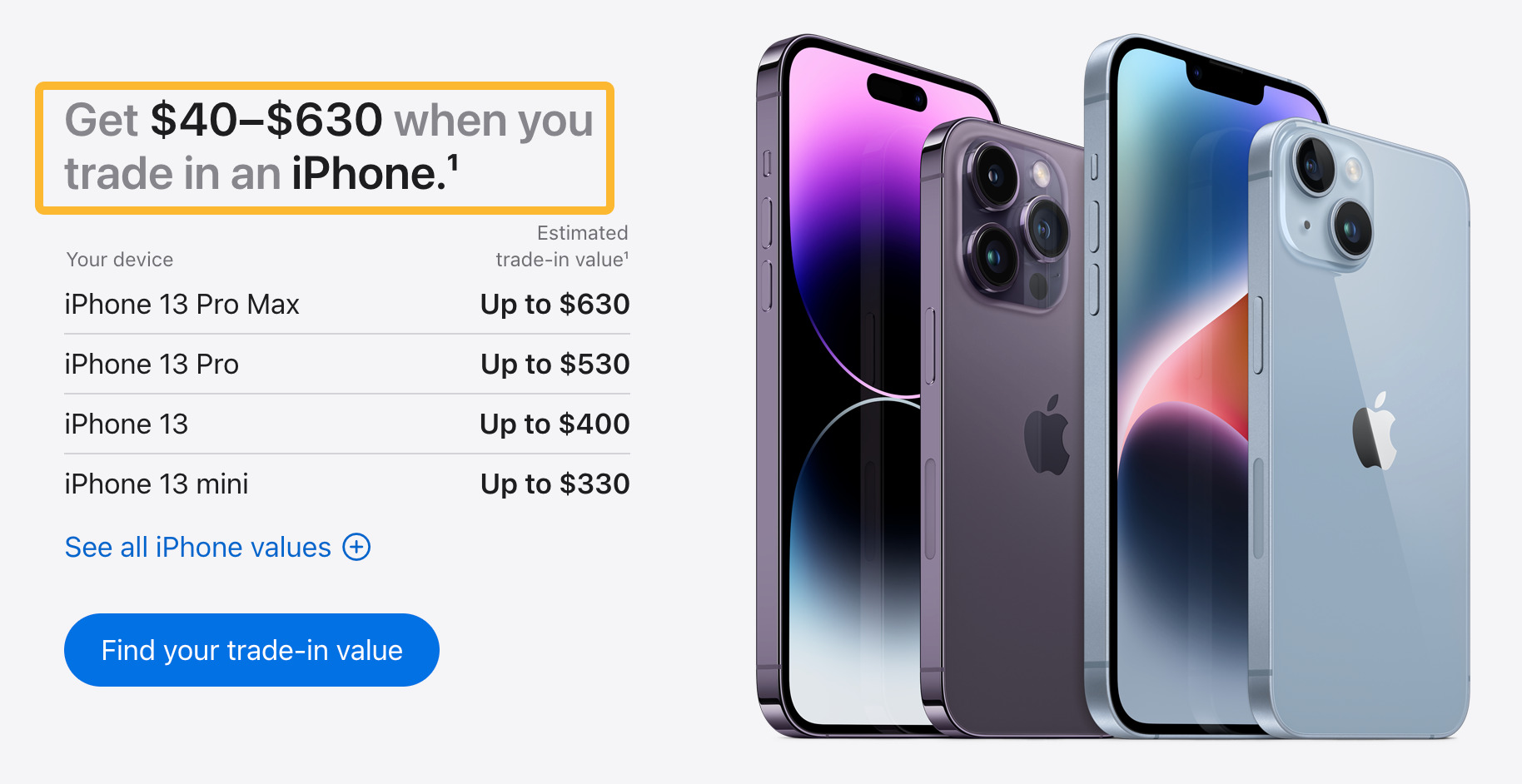
A couple of things to keep in mind when promoting to your existing audience. You should:
- Consider segmenting the audience before messaging them. You may want to craft messages adjusted for the stage of the buyer journey.
- Be careful with any special deals for selected groups; instead offer something for everyone.
- Follow up with the most engaged people directly. People who gave you constructive feedback or were vocal about new features are the ones you’d want to message directly.
- Be prepared to pay for reach boosts on social media. They likely won’t cost you a fortune, but don’t expect to reach your entire following for free (social media doesn’t work that way anymore).
- Make sure your followers and subscribers are not the last to learn about something.
Educational SEO content is content designed to rank in Google and show users how they can benefit from your product at the same time.
This kind of content promotes your product by bringing free, passive traffic from search engines to your website.
The key here is organic traffic potential. While typical educational content can be created around any topic that supports product adoption, for SEO content, you need keywords with search demand to start with.
For example, since Ahrefs is an SEO tool, we can create educational SEO content for topics such as keyword research, link building, technical SEO, online marketing, and so on.

When you add up hundreds of keywords together, you get a considerable sum of consistent traffic that brings you visitors even years after publishing the content.
Creating content like that follows the same, typical search engine optimization path:
- Find good keywords
- Create quality content
- Build links to it
The unofficial fourth point of that list is “wait.” Because the downside of optimizing for search engines is that it takes time to rank—typically three to six months. So while this is a great way to promote your product, it probably shouldn’t be the only one.
Also, the thing is this: If you don’t try to rank for your relevant keywords, your competitors will. And if so, you’re going to miss out on all of that traffic. So check out our guide to SEO content for beginners and learn how to bring home some of that search demand.
Affiliate marketing is when a third party (the affiliate) promotes a product of the merchant (you) and earns a commission.
There are basically two ways you can go about this marketing tactic:
While the latter option allows you more customization and you won’t be paying anyone any fees, the first option is probably the best choice for beginners. It’s less time consuming, less prone to errors, and it can likely be the most cost effective (fees are usually low, and you won’t need to build any infrastructure).
Prepare to hand out from 5% to even 50% of the revenue you get through affiliates. This may sound expensive. But remember: You don’t need to pay up front, and the affiliate does all the work.
Plus, until that affiliate makes a sale, that’s basically free promotion.
How do affiliates promote products? Similarly to influencers, they create the kind of content they are best at and distribute it on various channels.
Some of the most popular affiliate content formats are how-tos, tutorials, and reviews. Here’s an example from the prominent finance blog, Making Sense of Cents.

The demand for top products in any category is consistently high. You can see that in search queries. Here are some examples:

This means a lot of people are already looking for products like yours.
But the problem is the ranking difficulty for these search queries will be too high to try to rank with your own content. Because these kinds of queries are usually dominated by authoritative websites with tons of backlinks.
Solution: Get included in what’s already ranking. It’s your shortcut to the #1 page on Google for all of those hard-to-rank keywords.
Of course, this is easier said than done. It all depends on how good your product is, and the editors will always have the final say. However, what can definitely help is to work on your pitch:
- Show them why your product is a serious contender in comparison to what they already have on the list
- Make a strong case of why their audience will love your product
- Flash the recognition you already got
Also, note that people don’t just look for the “best” products. They also look for products that fill a specific need: for beginners, for marketers, for teams, under $100, etc.
Those keywords will likely have less search demand but could still have a high conversion potential. You can use a keyword research tool to find these keywords first and then pitch the sites that rank for them.

You can also find great opportunities if you follow links to your competitors. Here’s how it works in Ahrefs’ Site Explorer:
- Enter your competitor’s URL
- Go to the Backlinks report
- Enter the word “tool” in the Ref. page URL filter
- Set the mode to Group by similar and sort the pages by Page traffic (to show the pages with the most organic traffic first)
- Open referring pages and see if you can get a good angle to pitch your product

Tip

Guest posting or guest blogging is when you write for other blogs.
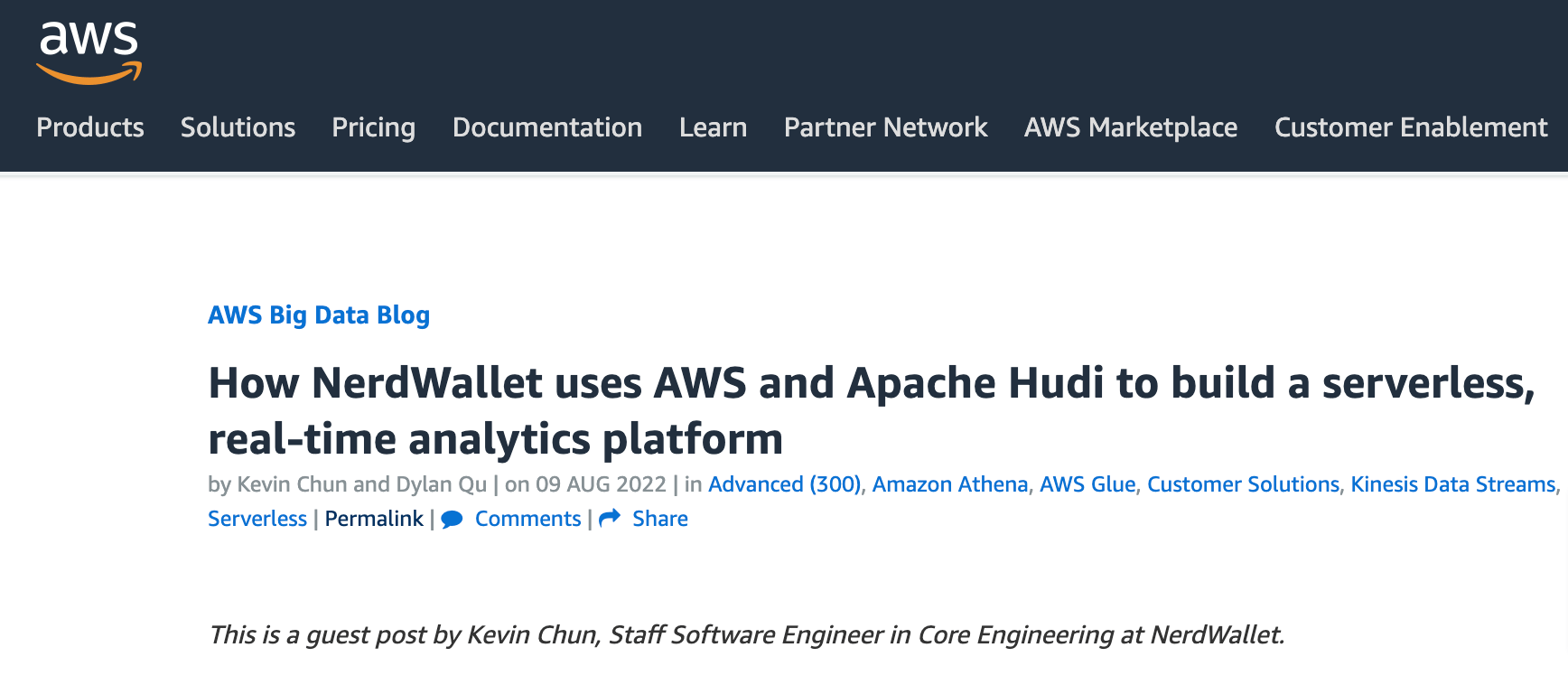
The trick here will be to pitch only those topics where you can naturally feature your product. You don’t need to make the entire article literally about your product. A good, contextual mention can also create awareness about your product.
Another thing to consider when guest blogging is the SEO aspect. In fact, a lot of marketers pursue this tactic only for the links.
This means you can prioritize websites that can give you a good link.

You can learn how to tell the difference between high-quality and low-quality links in our full guide to link building. But for now, let’s focus on arguably the two most important link quality factors: authority and relevance.
While relevance is something you can quite easily infer from the topics that the site covers, authority is not that transparent.
To get a good idea of a site’s authority, you’ll need an SEO tool. You can use Ahrefs’ SEO Toolbar as you use Google or check each site you want to pitch for free with our website authority checker.

Using podcasts as a promotional tactic works similarly to guest blogging: You talk about a topic relevant to your product, and that gives you an opportunity to introduce it to the audience. Plus, you can land a quality link too.

But the difference here is that the mere fact you’ve been invited to star on a podcast makes you and everything you do interesting. So I’d say it can help to generate awareness of your product even if it’s mentioned only in the description of the episode.
That said, the best podcast topics will be the ones that:
- Appeal to the podcast’s audience.
- Haven’t been covered already.
- Align with your experience.

And here’s a neat trick for finding uncovered topics (courtesy of Respona): use Google search operators. For instance, site:podcast.everyonehatesmarketers.com AND "omnichannel marketing" shows that this topic hasn’t been covered by the host of the show.

A referral program is a marketing tactic that encourages users to advocate your product in exchange for rewards such as cash, freebies, or product upgrades.
You’ve probably heard about some big companies like Dropbox, PayPal, or Uber using referral marketing. But don’t think this tactic is only restricted to big companies like them. In fact, referral programs were implemented in the early stages of these businesses and were found to be a crucial factor in their growth.
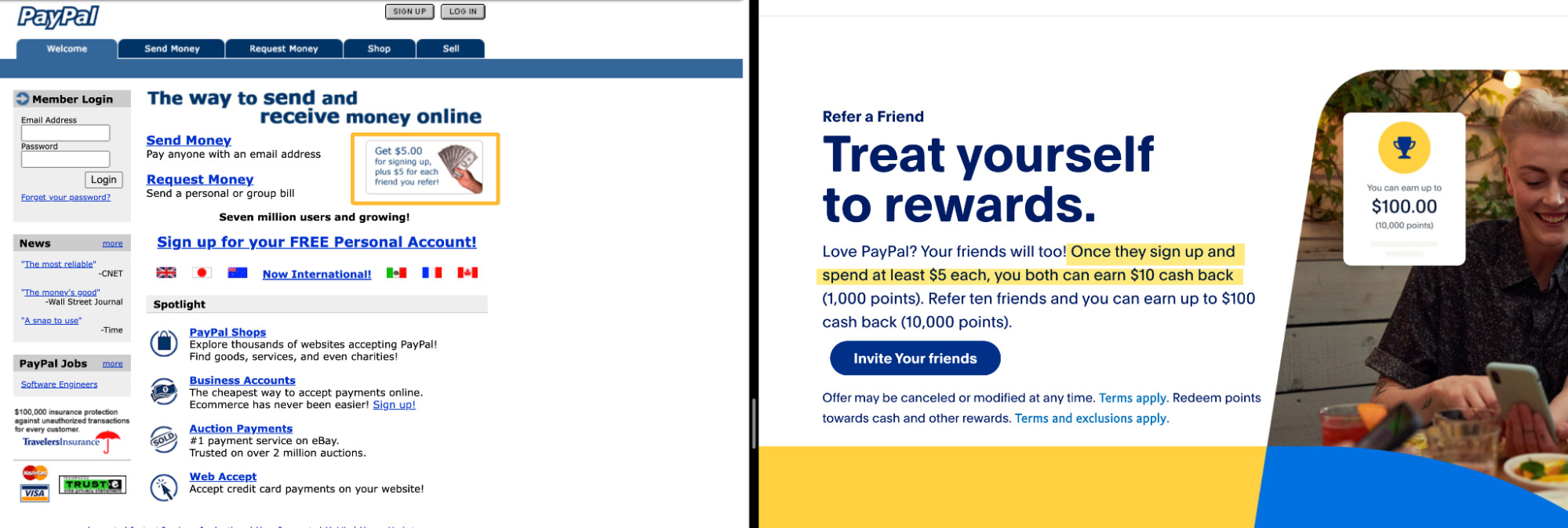
Statistically, a referral from a friend, family member, or colleague is one of the most effective ways to acquire customers since word of mouth is one of the most trustworthy marketing channels (source).
It can also be one of the most cost-effective ways to acquire customers, but it all comes down to the cost of your program.
To make your referral program successful, you need to consider three things.
First, the attractiveness of the reward. What will be more attractive to your users: a discount on their next purchase, an upgrade, or maybe a charity donation? Consider also two-way rewards: for the referrer and the referee.
Secondly, be careful about the cost of the reward to your business. PayPal basically gave out cash for signing up because the company figured out it’d be less expensive than ads. Indeed, it led to rapid growth, but you can imagine how much they spent without a promise of revenue. It’s a better idea to reward users who perform a specific action closely tied to your revenue.
Also, consider the customer acquisition cost (aka CAC) of other marketing tactics. Use this as a benchmark; ideally, you want to keep the CAC of your referral program lower than other tactics.
However, discretion is advised here. If you see that the users who come via referrals stay longer or spend more, a higher CAC could be justifiable.
On a last note, referral programs may be tough to operate without dedicated software that generates referral links and allows you to track them. So consider a tool like ReferralCandy or Viral Loops.
Last but not least, you can share positive feedback from early adopters of your product.
This way, you’ll build social proof that will establish your credibility and increase the likelihood of people signing up for your product or even buying it. I’m talking about sharing:
- Quotes
- Rankings
- Awards
- Case studies
- Photos and videos from customers
Some popular spots for placing social proof are sign-up forms, pricing pages, and product feature tours. But you can also experiment with their placement and see their impact on conversion.

It’s great if you have testimonials from high-profile influencers or celebrities, but the truth is the voice of “regular users” matters too. I’d argue that a product’s ability to consistently meet the needs of its regular users is more valuable than a few endorsements from famous people.
Final thoughts
If you can’t spend a lot of money on product promotion, don’t fret. You’ll find more than enough ideas that don’t rely on ads.
However, this doesn’t mean you need to give up ads completely. Something you can consider is reinvesting part of your revenue to try advertising tactics such as:
- Advertising on non-obvious platforms like Quora (case study).
- Targeting niche keywords with low cost per click but possibly high business potential.
- Using dayparting (available in Google Ads).
- Optimizing conversion on your landing page.
- Increasing ad quality score to reduce the cost of bids.
Got questions or comments? Ping me on Twitter or Mastodon.

